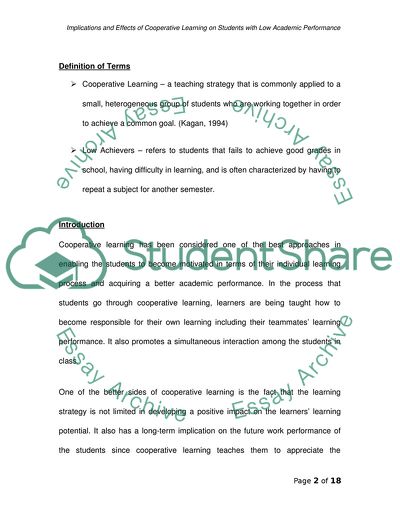Cite this document
(“Implications and Effects of Cooperative Learning Essay”, n.d.)
Implications and Effects of Cooperative Learning Essay. Retrieved from https://studentshare.org/education/1709574-essay-on-the-implications-and-effects-of-cooperative-learning-for-students-with-low-academic-or-social-outcomes
Implications and Effects of Cooperative Learning Essay. Retrieved from https://studentshare.org/education/1709574-essay-on-the-implications-and-effects-of-cooperative-learning-for-students-with-low-academic-or-social-outcomes
(Implications and Effects of Cooperative Learning Essay)
Implications and Effects of Cooperative Learning Essay. https://studentshare.org/education/1709574-essay-on-the-implications-and-effects-of-cooperative-learning-for-students-with-low-academic-or-social-outcomes.
Implications and Effects of Cooperative Learning Essay. https://studentshare.org/education/1709574-essay-on-the-implications-and-effects-of-cooperative-learning-for-students-with-low-academic-or-social-outcomes.
“Implications and Effects of Cooperative Learning Essay”, n.d. https://studentshare.org/education/1709574-essay-on-the-implications-and-effects-of-cooperative-learning-for-students-with-low-academic-or-social-outcomes.


